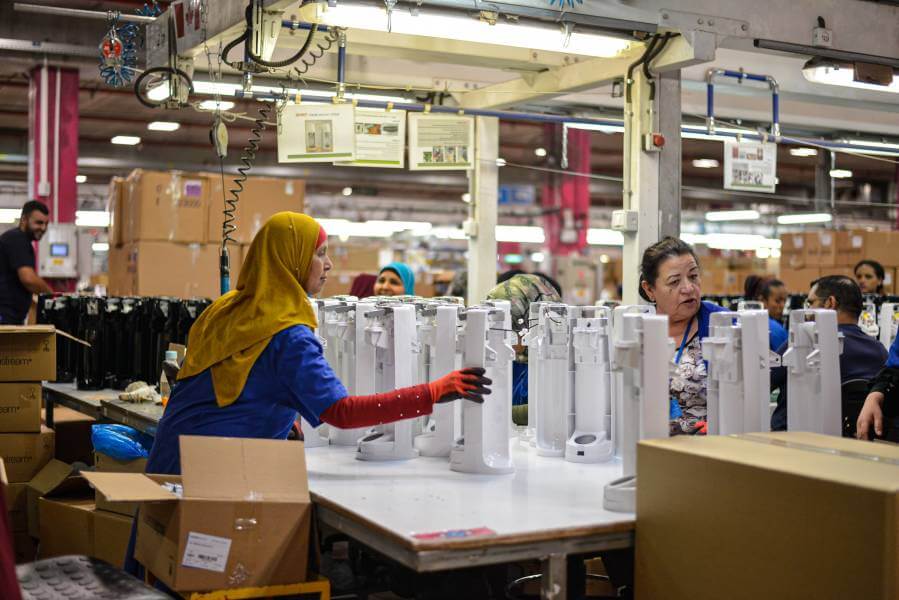All businesses must enhance efficiency at the workplace regardless of the industry as it’s critical for business growth. However, a manufacturing business, such as a drink manufacturer, needs to go the extra mile to boost production efficiency for several reasons. These could be anything from resource wastage to incorrect labeling, that may cause serious bottlenecks in the proper functioning of a manufacturing plant.
Top manufacturers are always looking for new and advanced ways to improve the production efficiency at their facilities. The ultimate goal is to improve their bottom line when it comes to production and business growth. The more production you can get out of a fixed timeline, the more money you make.
It doesn’t matter whether you’re trying to improve production efficiency at your facility or everything is going fine, there are several things that you do to increase throughput. This can be done without sacrificing quality.
To ensure that your manufacturing business is making strides towards increasing production efficiency, you’ll need to take care of five factors that we have listed below. These five tips revolve around the five fundamentals of manufacturing efficiency, let’s take a look.
Analyze Your Production Line
The production line in your manufacturing business is the center of your business functions. Therefore, it’s imperative to analyze and evaluate the production line from time to time.
While evaluating, it’s important to assess all details including the commonly overlooked ones like labeling and labeling machines that the business needs. For example, warehouse floor marking can significantly enhance workplace organization, improve safety, and streamline processes on the production floor. Clear markings help delineate work zones, pathways, and storage areas, reducing confusion and minimizing errors during busy production cycles.
When it comes to labeling equipment, consider automatic labeling machines that eliminate any human errors and improve efficiency on the floor or Electric Powered Lift Tables to minimize the manual labor that your team exerts.
Other equipment that can successfully optimize your production line includes tech like cameras. A GPU Direct Camera, for example, takes a large number of high-quality photographs per minute, meaning that even if you increase the speed of the belt carrying your products, the camera can still scan them all. Tech like cameras can both significantly speed up production lines and minimize human error.
Another key factor to consider is production throughput, which is a metric to determine the number of units being produced at any given point for an average duration.
It’s important to evaluate the throughput to ensure there are no issues in the production lines and help you determine issues when throughput is not on par. Lastly, businesses must evaluate the capacity utilization of their production line to determine its performance at all times.
Reduce Wastage
Every business must ensure that there’s minimal or no wastage in the production line as it’s an expensive cost in the long run. The waste can refer to anything from man-hours, materials, energy consumption, and a few more.
However, the most crucial concern is the wastage of material. According to a report, around 7.6 billion tons of industrial waste are produced every year in the US. You’ll need to evaluate your production line to figure out ways to reduce material waste.
Bear in mind that every production line process will have a certain degree of waste, that’s a given. The best way to reduce the overall waste is to identify the processes that are responsible for the most amount of waste. The best way to handle manufacturing waste is to recycle or reuse it. Another effective way is to sell the waste to a business that can make use of it in case you are unable to do so.
Identify Bottlenecks
A thorough evaluation of the production line will also help you identify major bottlenecks or breakdowns in the production line. These bottlenecks can lead to the shutdown of operations from time to time resulting in a massive impact on your company’s overall profit and reputation.
Therefore, it’s crucial to identify all sources of bottlenecks that could hinder the manufacturing process even for a short amount of time. Once you have identified these sources, it’s imperative to take measures to prevent them from happening again, especially if you are in the manufacturing industry.
Regular Employee Training
Manpower resources are what holds your business together and this is a common denominator across all industries and not just the manufacturing industry. One of the biggest factors responsible for manufacturing waste is the untrained staff.
They are not able to manage their work roles efficiently and end up creating more waste than usual. Your production capacity will most likely take a hit if your staff is not receiving timely training to improve their abilities.
Therefore, manufacturing businesses must hold frequent training sessions and workshops to boost production efficiency. Apart from skills and relevant technical training, companies must also emphasize health and safety training on the floor. The more equipped your staff is regarding how to deal with any situation, the more capable they will be on the floor.
Sort Out the Workplace
It goes without saying that an organized workplace is capable of maximizing production efficiency on the floor. Therefore, it’s a must to quantify and organize the workplace for your staff to carry out their jobs in an organized manner.
Start with quantifying every area of your business to get an insight into what works and what doesn’t. After you have the insight, organize everything within the workplace so that your employees can carry out their responsibilities seamlessly.
To summarize, there are many ways in which businesses can optimize their production line to increase production efficiency. However, almost all practical and effective methods have their roots based on the above five fundamentals of manufacturing efficiency.
HedgeThink.com is the fund industry’s leading news, research and analysis source for individual and institutional accredited investors and professionals





































